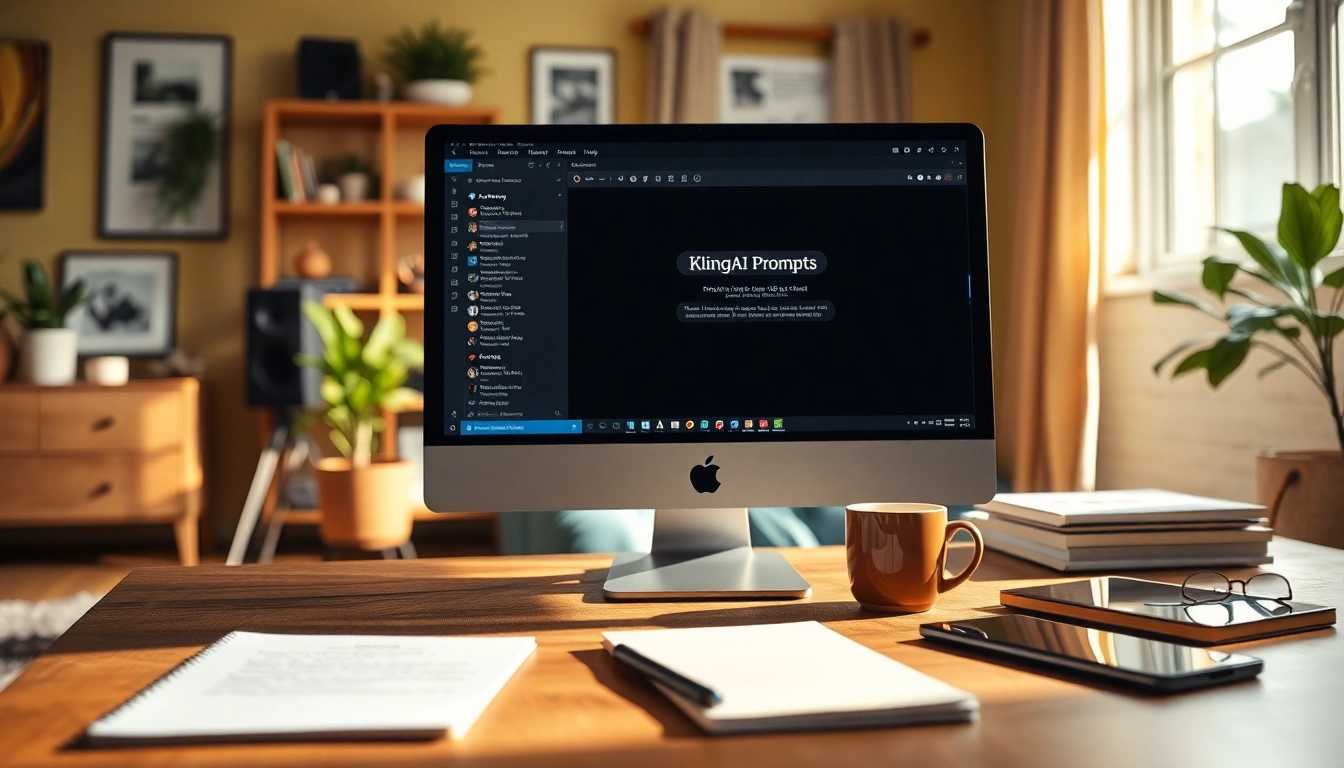Understanding Molded Pulp Packaging
What is Molded Pulp?
Molded pulp, also known as molded fiber, is a packaging material made primarily from recycled paperboard and newsprint. It is formed through a very effective process that involves soaking, forming, and drying fibrous materials. This results in a highly protective structure, which makes it an excellent choice for various packaging needs. The versatility of this material allows it to collaborate effectively with various industries, offering a sustainable solution that meets both consumer demands and environmental standards. The use of molded pulp packaging continues to grow as brands seek alternatives to plastic and foamed products.
Materials Used in Production
The core materials used in the production of molded pulp packaging typically include:
- Recycled Paper: This is the primary ingredient, drawn from waste paper products. The recycling process involves breaking down the paper, allowing for regeneration into new fibers.
- Natural Fibers: In addition to recycled paper, some manufacturers incorporate natural fibers such as bamboo, sugarcane, or wheat. These materials enhance the structural integrity of molded pulp products.
This combination of fibers helps produce a durable product that can withstand various shipping conditions while ensuring that the packaging is both functional and eco-friendly.
Environmental Impact and Sustainability
Molded pulp packaging stands out in terms of sustainability. It is not only made from recycled materials, but it is also fully biodegradable and compostable. In a world increasingly concerned about environmental health and sustainability, molded pulp presents a compelling argument for transition away from traditional packaging materials like plastics and polystyrene.
By using molded pulp, companies can significantly reduce landfill contributions, mitigate plastic pollution, and promote a circular economy. As a testament to its sustainability, studies show that adopting molded pulp packaging can cut down greenhouse gas emissions associated with packaging by up to 60% when compared to traditional systems.
Advantages of Molded Pulp Packaging
Biodegradability and Eco-friendliness
The biodegradable nature of molded pulp is perhaps its most significant advantage. Unlike plastics, which can take hundreds of years to decompose, molded pulp can break down naturally within a few months under the right composting conditions. This feature is particularly appealing to environmentally conscious consumers who prioritize sustainable practices and products.
Additionally, the production process of molded pulp involves fewer chemicals compared to traditional packaging methods, which further minimizes the ecological footprint. The eco-friendliness of molded pulp positions it as a leading solution in developing sustainable packaging practices.
Cost-effective Alternative to Plastic
While the initial investment in molded pulp packaging may be comparable or slightly higher than that of plastic, the long-term benefits outweigh the costs. Molded pulp often results in reduced shipping and storage costs due to its lightweight design and stackable nature. Furthermore, as more businesses shift towards using sustainable materials in their operations, regulations may enforce stricter guidelines on plastic use, likely leading to increased costs for plastic packaging over time.
Thus, transitioning to molded pulp not only serves an environmental purpose but could also present a financial advantage in the long run, especially as the demand for eco-friendly products increases.
Customization Options for Businesses
One of the key aspects of molded pulp packaging is its adaptability. Businesses can tailor the design, shape, and dimensions of molded pulp products to suit their specific packaging needs. This customization ensures that the packaging fits products perfectly, providing adequate protection during transit and an appealing presentation on store shelves.
Whether it’s for electronics, cosmetics, food items, or fragile goods, molded pulp can be designed to accommodate various product configurations. This versatility allows brands to maintain their identity while adhering to sustainability goals.
The Manufacturing Process
From Raw Materials to Finished Product
The manufacturing process for molded pulp packaging consists of several key stages:
- Pulp Preparation: Raw materials, primarily recycled paper, are sorted and processed into pulp slurry. This step involves macerating the paper and introducing water and natural adhesives to create a homogenous mixture.
- Molding: The pulp slurry is molded into the desired shape using molds, which can be custom-designed based on the specifications required by the client. This stage is crucial for achieving the right fit and function.
- Drying: After molding, the products undergo a drying process, which ensures they reach optimal strength and durability. Drying also helps remove excess moisture, preparing the product for packaging and shipping.
- Finishing: Depending on the requirements, additional treatments may be applied to enhance the product’s properties, such as coatings for moisture resistance or dyeing for aesthetic reasons.
Quality Control in Molded Pulp Production
Quality control is paramount to ensuring that molded pulp products meet industry standards and performance expectations. Key quality checks typically include:
- Visual Inspections: This includes checking for defects, ensuring uniformity in appearance, and verifying that there are no tears or weaknesses.
- Testing Strength: Samples may undergo compression and drop tests to ascertain their durability and protective capabilities.
- Sustainability Certifications: Manufacturers often seek certifications that reflect adherence to environmental practices, providing transparency to consumers about sustainable sourcing.
Through these stringent quality control measures, manufacturers can guarantee that their products not only meet the needs of their customers but also align with eco-conscious values.
Innovative Techniques in Pulp Molding
Innovation plays an essential role in molded pulp manufacturing, with advancements such as:
- Dry Molding Technology: This technique allows for the creation of molded pulp without the need for water-intensive processes, enhancing efficiency and reducing waste.
- Co-Molding: This technique enables the combination of different materials, such as plastics and molded pulp, resulting in hybrid packaging solutions that leverage the strengths of both materials.
These innovations not only improve the performance of molded pulp packaging but also provide more options for brands looking to enhance their packaging solutions.
Applications of Molded Pulp Packaging
Industries Utilizing Molded Pulp
Molded pulp packaging is utilized across various industries such as:
- Electronics: Provides secure cushioning for fragile components and devices, reducing damage during shipping.
- Food and Beverage: Offers safe, biodegradable options for single-use containers and trays that ensure product integrity.
- Cosmetics: Custom-designed packaging that provides an aesthetic and protective solution for beauty products.
- Industrial Applications: The robust nature of molded pulp can support heavy items, making it ideal for protective packaging in manufacturing.
Examples of Products Effectively Packaged
Many products benefit from molded pulp packaging, including:
- Wine Bottles: Custom molded pulp trays safeguard bottles, preventing movement and reducing breakage during transport.
- Consumer Electronics: Products like smartphones and laptops are often packaged using molded pulp to create a snug fit that prevents damage from impacts.
- Food Items: Products like eggs and ready-to-eat meals use molded pulp trays that maintain hygiene while being environmentally friendly.
Case Studies of Successful Implementations
Several companies have successfully implemented molded pulp packaging, achieving notable outcomes:
- Apple Inc.: In its commitment to sustainability, Apple transitioned a significant portion of its packaging to molded pulp, reducing its reliance on plastic and reinforcing its brand identity as an eco-friendly leader.
- PepsiCo: Launched a series of initiatives that included using molded pulp trays for snack packaging, significantly reducing their carbon footprint and solidifying their pledge towards sustainability.
These case studies showcase the effectiveness of molded pulp packaging in enhancing brand reputation while contributing positively to the environment.
Future Trends in Molded Pulp Packaging
Emerging Technologies in Sustainable Packaging
The demand for sustainable packaging solutions continues to drive technological advancements in molded pulp packaging. Innovations such as smart packaging, which incorporates sensors for monitoring product quality, are on the rise. Many businesses are also exploring the integration of intelligent design that can accommodate complex shapes while conserving materials.
Consumer Preferences Shaping the Market
As consumers become increasingly environmentally aware, their preferences are profoundly reshaping the packaging industry. This shift is evident in the rising demand for sustainable materials for packaged goods. Companies that pivot towards molded pulp packaging not only meet consumer expectations but also differentiate themselves from competitors who continue to rely on traditional materials.
Environmental Legislation and Its Impact
Legislative changes are significantly impacting the packaging industry. These regulations, aimed at curtailing plastic waste and promoting sustainable practices, will likely create a more favorable environment for molded pulp packaging’s growth. Companies will need to remain vigilant and adaptable to these changes, looking to embrace molded pulp as a viable alternative to current practices.















Leave a Reply